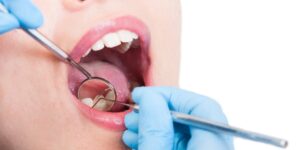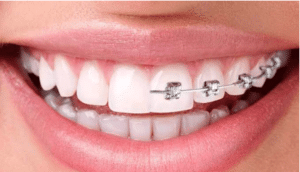Potentially Malignant Disorders: Be aware of Oral Cancer
Precancerous Lesion & Condition

A precancerous lesion is a morphologically altered tissue in which oral cancer is more likely to occur than in its apparently normal counterpart, for example, Leukoplakia, Erythroplakia etc. A precancerous condition is a generalized state associated with a significantly increased risk of cancer, for example, submucous fibrosis, Lichen planus etc.
However, in a workshop held in 2005 by the World Health Organization (WHO), it was decided to use the term “potentially malignant disorders (PMD)” as it conveys that not all disorders described under this term may transform into cancer.
The following were identified as Potentially Malignant Disorders by the World Health Organisation.
- Leukoplakia
- Erythroplakia
- Palatal lesion of reverse cigar smoking
- Oral lichen planus
- Oral submucous fibrosis (SMF)
- Discoid lupus erythematosus
Read about Oral and Maxillofacial Surgery
Management of potentially malignant disorders
Most PMD are asymptomatic and the major goal of treatment is to prohibit and/or to detect cancer development early. Treatment of PMD can be in three groups namely close observation, surgical excision/ablation, and medical treatment.
*Observation
Patients with early small lesions that are clinically benign-appearing and emerge in favorable areas can be noticed. Still, the demands for repeated follow-ups and the chance of malignant conversion ought to be taught to the patient.
*Conservative surgical excision
Surgical resection is carried out to get rid of areas at high risk to advance to early carcinoma or to execute early malignant transformation. The inefficiency to winningly eliminate all precancerous regions with surgery is only because of the extended ‘field effect’ usually found in the oral cavity, to which exposure to carcinogens generates premalignant transformations over major surfaces of the mucosa. Besides, excision is linked with excessive recurrence rates.
*Laser ablation
This procedure offers the likely advantage of reduced scarring, yet, the lack of a ressected specimen for histopathologic and genetic studies, sets a major disadvantage.
*Cryosurgery
It constrains the particular advantage. Recurrence rates of 20–71.4% have been reported, accompanying malignant transformation rates of 7–25%.
*Photodynamic therapy
A photosensitizing agent, such as 5-ALA or hematoporphyrin derivatives, which exclusively targets neoplastic cells is dispensed either intravenously or topically. The tissue to be aimed is then exposed to a set wavelength of light, which energizes the photosensitizer, induce it to transfer energy to molecular oxygen, giving rise to reactive oxygen species locally, and successive tissue damage.
In case of erythroplakia, surgery, either by laser or cold knife, is the suggestive treatment technique. Without therapy, this disease modifies into invasive carcinoma in 60–90% of the cases during 5–10 years after first diagnosis.
Screening for PMDs

The whole mucosa of the upper aerodigestive tract once exposed to a variety of carcinogens will likely encounter and heap up various cytogenetic reforms which sooner or later lead to the development of varied malignant lesions. This signifies that a large number of cancers are upheld by an observable preclinical state.
In general malignant transformation rates for various PMDs range from approximately 5% for leukoplakia to ~85 % for erythroplakia. Prior detection of these lesions may help in stopping their malignant transformation or downstaging the disease. This is the whole idea back in the screening of populations with high-risk conduct for oral cancer.
Thus, Potentially malignant disorders are a chief extent of diseases that need to pin down and followed through firmly. Precise spotting of their malignant potential may help in early diagnosis of cancer and downstaging of the disease.
Talk to Our Dentists Online
For any Dental Query, our best doctors are one-step away
Book Online Appointment




